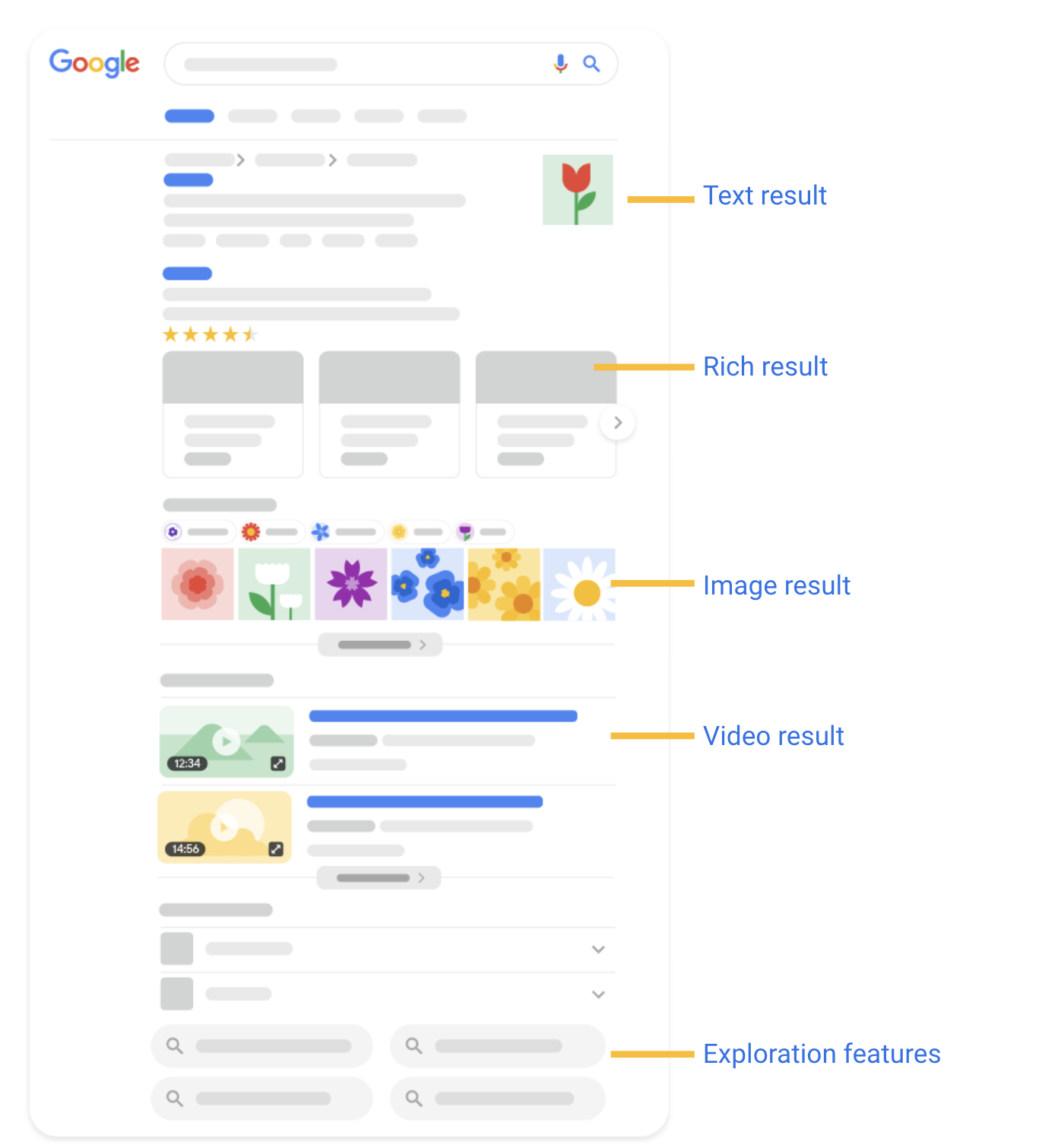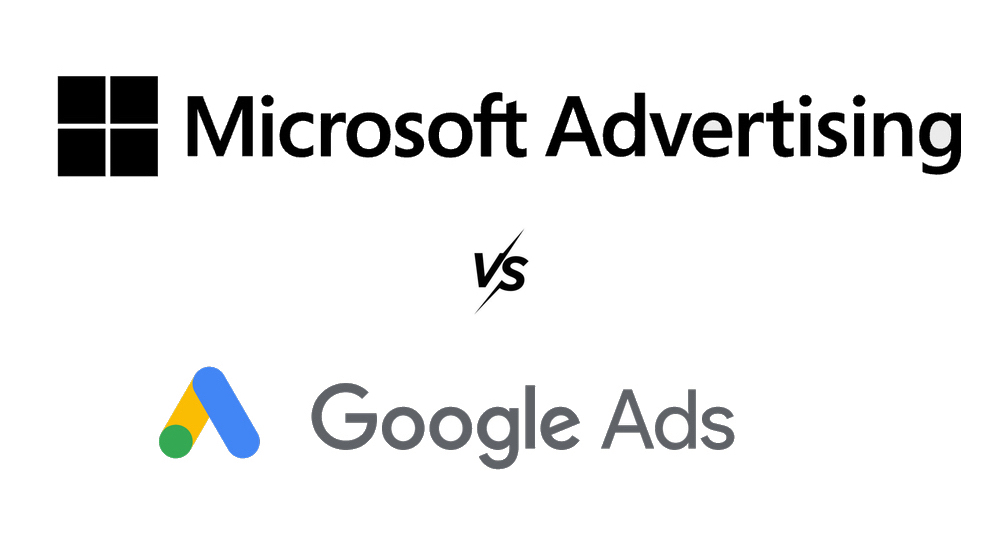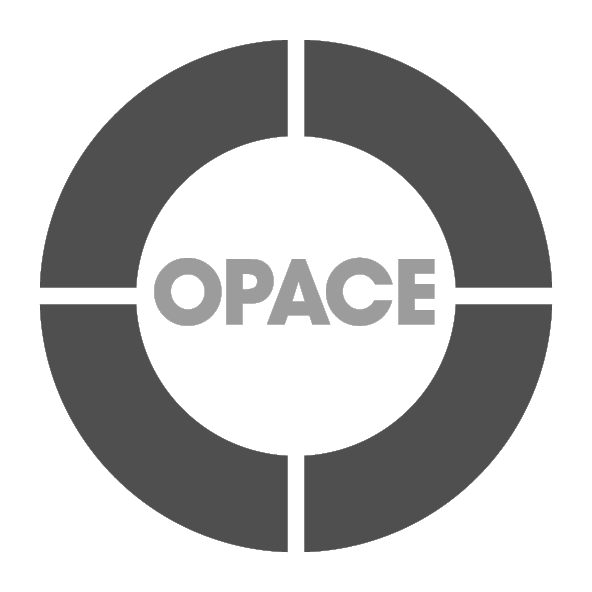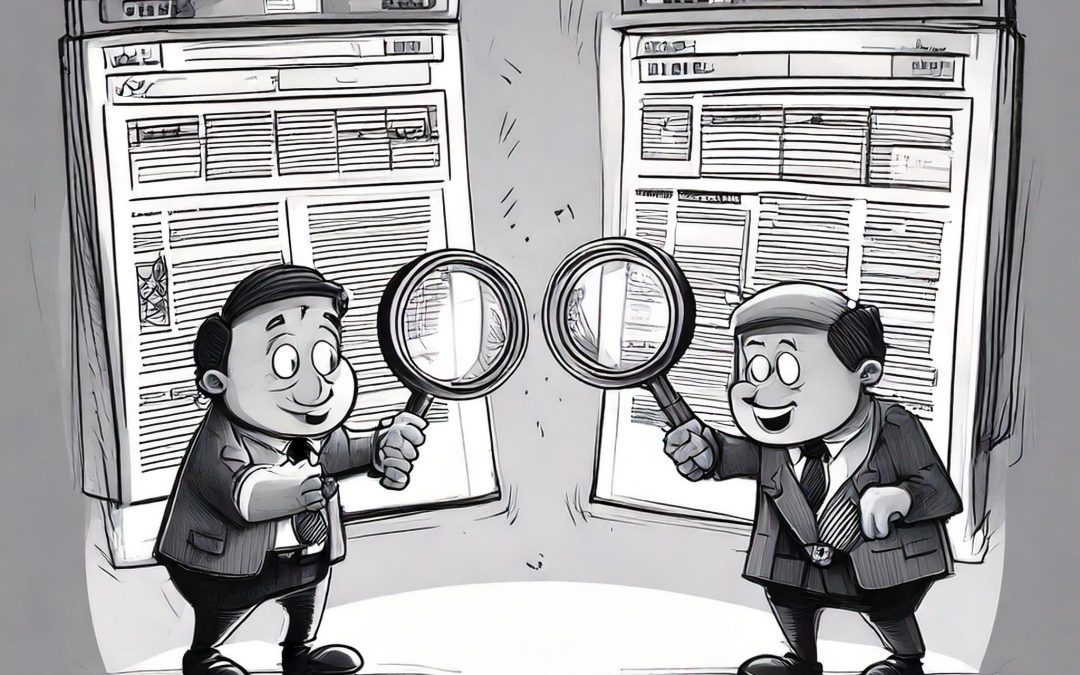So, here you are, comparing Bing Ads vs Google Ads and wondering whether the behemoth that everyone and their nan uses (Google) is better than the scrappy underdog no one seems to talk about (Bing).
Bing Ads—now rebranded as Microsoft Advertising—has spent years in the shadow of Google Ads (formally Google AdWords). And let’s be real: the very idea of splitting your budget between these two advertising platforms can feel like betraying the SEO gods (or at least your marketing manager’s sanity).
But hold tight, if you’re trying to decide between Google Ads and Bing Ads, the truth about ROI and reach might surprise you.
Let’s first look at the basics.
What are Search Ads?
Search ads are the bread and butter of online advertising. They show on search engine results pages (SERPs) when someone types in a relevant query—those text-heavy rectangles that say “Ad” or “Sponsored” in a tiny font, just in case you thought they were organic. They’re part of Pay-Per-Click (PPC) advertising, which means you’re essentially paying rent for a user’s click.

A visual overview of a Google Search results page. Source Google.
These search ads dominate both Google and Bing, appearing either at the top or bottom of search results. They’re simple yet powerful, and their ability to directly match search intent with your offer is why marketers swear by them. The core idea? If someone’s searching for “best running shoes,” you bet they’re in a buying mood.
So if you are trying to decide between Google Ads or Bing Ads, we’ve got you covered—read our full comparison below.
Rebrands and Razzle-Dazzle: Why Bing Ads and Google AdWords Got Makeovers
Nothing screams “We’re hip and relevant!” like ditching a clunky old name for something snazzy and minimalist.

Both Bing Ads and Google AdWords rebranded to appeal to the modern world of advertising.
That’s exactly what happened when Bing Ads transformed into Microsoft Advertising (Microsoft Ads), and Google AdWords was reborn as Google Ads. But these weren’t just vanity projects to swap one logo for another. Nope—there were strategic reasons behind these makeovers, and they tell us a lot about where digital advertising is heading.
Google AdWords to Google Ads: Because Less Is More
Google AdWords—may it rest in peace—was a product of its time.
When it launched in 2000, it was all about keywords, because back then, the internet was basically just Ask Jeeves, GeoCities, and banner ads. The name made sense: “AdWords” was literally about buying words to display ads.
Fast-forward to 2018, and the internet is a sprawling ecosystem of search, video, apps, and shopping carts overflowing with abandoned items.
Google decided to simplify. Enter Google Ads, a sleeker name for a platform that no longer revolved solely around text-based search ads. It was now about all the ads—google search network, display network, video ads on YouTube, app ads, shopping—you name it. The rebrand reflected this broader focus and made the platform sound less… well, dated.
Bing Ads to Microsoft Advertising: The Underdog Goes Corporate
Bing Ads had a similar identity crisis, but for different reasons. In 2019, Microsoft decided it was time to wave goodbye to the “Bing” branding.
Let’s face it—Bing’s name recognition wasn’t exactly stellar outside a loyal user base. The switch to Microsoft Advertising was about leveraging the larger Microsoft brand and showcasing its expanding suite of ad offerings.
The new name also signalled something bigger: Bing Ads wasn’t just about the Bing search engine anymore. Microsoft Ads tapped into the full Microsoft ecosystem—LinkedIn, Outlook, MSN, and even Xbox. The rebrand was essentially saying, “Hey, we’re more than just Bing. We’re Microsoft, and we’ve got a lot more up our sleeve.
The Bigger Picture: Why Rebrands Matter
Both rebrands share a common theme: they reflect how digital advertising has moved beyond search. It’s not just about keywords anymore; it’s about multi-channel strategies, machine learning, and capturing attention wherever users happen to be—whether that’s Googling “best sushi near me” or scrolling through LinkedIn during a boring Zoom meeting.
And let’s not forget the power of perception. “Google Ads” and “Microsoft Advertising” just sound bigger, more capable, and—let’s be honest—less geeky than their predecessors.
These names signal that these platforms are ready for the modern marketer, not stuck in the early 2000s.
Key Differences Between Google Ads and Bing Ads (Microsoft Advertising)

Bing Ads vs Google Ads: Key Differences
1. Reach: Google’s Empire vs Bing’s Loyal Kingdom
Let’s not kid ourselves—Google is the Goliath here. Its search engine dominates search with over 93% market share here in the UK (source Statista). But Bing? It’s got a smaller, more niche audience, clocking in at around 4% of the UK search market (source Statista).
That sounds pathetic until you realise this translates to billions of monthly searches. Yes, billions. The difference is in who’s searching.
Google Ads: All Roads Lead to Google
Google Ads gives you access to a massive pool of users, from your teenage cousin googling memes to your dad asking how to grill a steak. There’s no denying the breadth of its reach. But here’s the thing: with great power comes… great competition. With everyone bidding on the same keywords, cost-per-click (CPC) can feel more like cost-per-kidney.
However, Google Ads casts the widest net possible, appealing to an audience so diverse it could double as a BuzzFeed quiz. You’ve got Gen Z meme-chasers looking up “best viral TikTok recipes” alongside Baby Boomers asking how to “print from my iPhone.” And yes, even that one person still Googling “Is Google free?”
What makes Google Ads so powerful is its surgical precision when it comes to targeting:
- Keyword Matching: Whether you’re targeting broad terms, exact matches, or phrases with just the right nuance, Google’s options ensure your search ads hit the right searches.
- Demographic Filters: Age, gender, income—you name it, you can filter for it. Want to target 30-year-olds with disposable income who live in the suburbs? Easy.
- Interest-Based Targeting: Through the Google Display Network, Google Ads lets you zero in on people based on hobbies, behaviours, and interests. Whether it’s cat lovers or cryptocurrency enthusiasts, the platform delivers.
Google Ads doesn’t just dominate search—it controls an entire advertising ecosystem. Beyond classic text ads, its reach spans video ads on YouTube, image ads, and Google Shopping placements. The Google Display Network extends your campaigns to millions of partner websites, apps, and more, while features like call-only ads make it easy to connect directly with customers.
From PPC ads to app ads, Google’s versatile ad formats let you appear everywhere your audience might be—whether they’re browsing blogs, watching videos, or actively searching for products. The breadth of options ensures your ads can target users at any stage of the buying journey.
So, with Google, you’re not just finding your audience; you’re finding all the audiences.
The challenge? Everyone else is too. That means fiercer competition, higher costs, and the occasional headache when your perfectly crafted Google Ads campaigns get lost in the noise.
Bing Ads: The Niche Market You Didn’t Know You Needed
Now, let’s talk Bing Ads—a.k.a. Microsoft Ads.
Bing caters to a different demographic. If Google is the bustling megamall of the internet, Bing feels more like a swanky members-only club. It caters to a more refined crowd:
- Older users: More three quarters of Bing’s users are over 25 (source Demandsage).
- Higher income brackets: Nearly 40% of Bing users earn over $100,000 annually (source Coalition Technologies).
- Desktop users: Bing thrives on desktop computers, making it ideal if your target audience isn’t glued to their mobile screens 24/7.
In essence, Bing Ads puts you in front of an audience that often isn’t on Google. Fewer advertisers mean less competition, lower CPCs, and higher ad visibility. And since fewer advertisers are bidding for those eyeballs, CPC is often 30-50% cheaper than Google Ads (Source Wordstream). Bargain hunters, take note.
It’s like fishing in a quiet pond versus battling sharks in the Google ocean.
But the real gem? LinkedIn integration. Microsoft Advertising lets you target professionals based on their industries, job titles, or companies. This gives Bing Ads an edge in B2B marketing, where precision and professional relevance matter more than massive reach.
The Big Takeaway
If you’re after volume and versatility, Google’s sprawling audience and deep targeting tools are unmatched. But if you’re targeting the well-heeled, the desktop-bound, or the corporate world, Bing offers a focused, cost-effective way to connect with people who matter.
For more information on the true cost of using Google Ads, read more below:
Both platforms have their strengths; it’s all about knowing who your audience really is—and where they spend their time online.
2. Cost-Per-Click: Bing’s Bargain Basement or Google’s Premium Store?
If you’re tired of Google draining your marketing budget, Bing’s CPC rates might feel like a cold drink on a hot day.
On average, Bing Ads’ CPC is 33% cheaper than Google Ads. Why? Competition—or the lack thereof.
Google Ads: Expensive, but Worth It?
Google Ads often feels like the Rolls Royce of digital advertising: premium, sleek, and designed to make your wallet cry.
High CPCs are par for the course, particularly in competitive industries like law, finance, and tech. For example, keywords like “personal injury lawyer” can run upwards of £50 per click. That’s not a typo—£50 just to maybe get someone to your site.
Bing Ads: Your Budget-Friendly Backup
Bing is like that dependable friend who doesn’t charge you for gas when you carpool.
Cheaper CPCs mean you can stretch your budget further, reaching more users for less. If you’re working with limited ad spend, Bing Ads lets you test the waters without draining your bank account. Plus, with a smaller pool of advertisers, you’ll often find better placements for your ads. It’s not “cheap”; it’s cost-effective.
3. ROI: Which Platform Gives You the Most Bang for Your Buck?
ROI—the holy grail of advertising. Both Google and Bing Ads have their strengths, but your choice boils down to how well you know your audience and where they’re spending their time.
Google Ads: High Spend, High Returns (If Done Right)
Google Ads works wonders if your audience lives on Google—which, let’s be honest, most of them do.
But maximising ROI using Google Ads requires finesse: laser-targeted keywords, optimised ad copy, and the patience to tweak campaigns like you’re carving a masterpiece. When done right, Google delivers unmatched reach and conversion potential.
The downside? You can bleed cash faster than a leaky boat if you’re not careful. Without strong performance metrics and A/B testing, you might find yourself wondering why your “winning” campaign barely breaks even.
Bing Ads: Small Investment, Surprisingly High Returns
Bing might not offer the flashy numbers Google flaunts, but it delivers consistent, reliable ROI—especially for niche markets.
Its users tend to have higher purchasing intent, which can translate to better conversion rates.
Think about it: fewer casual browsers, more serious buyers. And because you’re spending less per click, every conversion feels like a win. It’s less “sexy” than Google, but when has ROI ever cared about glamour?
4. Tools, Ad Formats and Features: A Tale of Two Platforms
Both advertising platforms offer robust tools to manage your campaigns, but they’re not created equal.
Google Ads: The King of Innovation
Google’s advertising platform is cutting-edge, packed with features like machine learning, responsive search ads, and dynamic keyword insertion.
For retail? Google Shopping Ads lets you display your products right in front of potential buyers. It also boasts advanced features like Smart Campaigns (automation-driven ad optimisation) and Performance Max assets, which use machine learning to target users across all Google properties.
The AI-driven tools make campaign management a breeze—if you can stomach the complexity.
The downside? The learning curve for beginners can feel like climbing Mount Everest in flip-flops.
Bing Ads: Underrated and Overlooked
Bing Ads’ interface is simpler and easier to navigate, making it perfect for small businesses or those new to PPC.
It supports text, shopping, and display ads, much like Google Ads. However, what sets it apart is LinkedIn integration (thank you, Microsoft!) letting you drill down into professional demographics, making it a B2B marketer’s dream.
Bing also lets you import campaigns directly from Google Ads, so there’s no excuse to ignore it.
5. The Hidden Factors: Beyond ROI and CPC
It’s not all about numbers. Sometimes, the intangibles make or break your campaign.
Audience Overlap
Here’s the kicker: Bing and Google audiences don’t always overlap.
While Google captures the masses, Bing’s audience skews towards older, wealthier professionals who value quality over quantity.
If your product appeals to this crowd, you might find Bing Ads delivers better-qualified leads.
Platform Loyalty
Google users are habitual creatures. They’re likely to stay within the Google ecosystem, whether they’re using Maps, Gmail, or YouTube.
Bing users, meanwhile, are often tied to Microsoft products like Windows, Edge, or Outlook.
If your product ties into one ecosystem, let that guide your choice.
Integration and Ease of Use
Both platforms let you integrate with eCommerce platforms like Shopify, simplifying campaign management. If you’re running an eCommerce store, it’s worth exploring these integrations to streamline the whole process.
Bing Ads shines where ease of transition is concerned with its Google Ads import tool. If you’ve already set up Google campaigns, you can replicate them on Bing with just a few clicks. No learning curve required!
6. The Verdict: Which Should You Choose?
If you’re expecting a one-size-fits-all answer, sorry to disappoint.
The truth is, both platforms have their merits, and the “right” choice depends on your goals. The one you choose depends on who you’re targeting and how much you’re willing to spend.
Here’s a quick cheat sheet:
- Choose Google Ads if: You want scale, reach, and the ability to dominate competitive markets. But be prepared to pay for the privilege. Google Ads is ideal for big players with bigger budgets. It’s great for eCommerce and retail businesses that want maximum reach through Google shopping ads and Google’s wider search networks.
- Choose Bing Ads if: You’re targeting older, wealthier demographics or want to test PPC waters without a massive budget. Bing’s lower CPCs and tailored audience make it a fantastic complement to a Google-first strategy. It’s also more targeted when it comes to B2B advertising.
Another factor? Competition levels.
Keywords on Google are as crowded as Oxford Street on a Saturday, while Bing feels more like a calm countryside road where you actually stand out.
Pro Tip: Why Not Both?
Here’s a radical thought: don’t choose. Split your budget, run campaigns on both platforms and let the data decide.

Split your ad budget between Bing Ads and Google Ads
Use Bing Ads as a testing ground for keywords and strategies before scaling them up on Google. Or, use Google for broad reach and Bing for high-converting niches. Together, they can be a dynamic duo.
Final Thoughts
The Bing Ads vs Google Ads debate isn’t about picking a “winner.” It’s about understanding your audience, experimenting with strategies, and embracing the quirks of each platform.
Google might be the Goliath of digital advertising, but Bing has carved out a niche that’s worth exploring—especially if you’re tired of throwing wads of cash at Google Ads with mixed results.
So, is Bing Ads the underdog? Sure. But sometimes, the underdog is exactly what your marketing strategy needs.
Why not hedge your bets? Run simultaneous campaigns, compare performance, and let the data guide your ad spend. Because in this duel, the real winner is the marketer who knows how to play both sides.
If you enjoyed this article, please drop us a comment below. And if you need a professional PPC agency, feel free to drop us a message.

